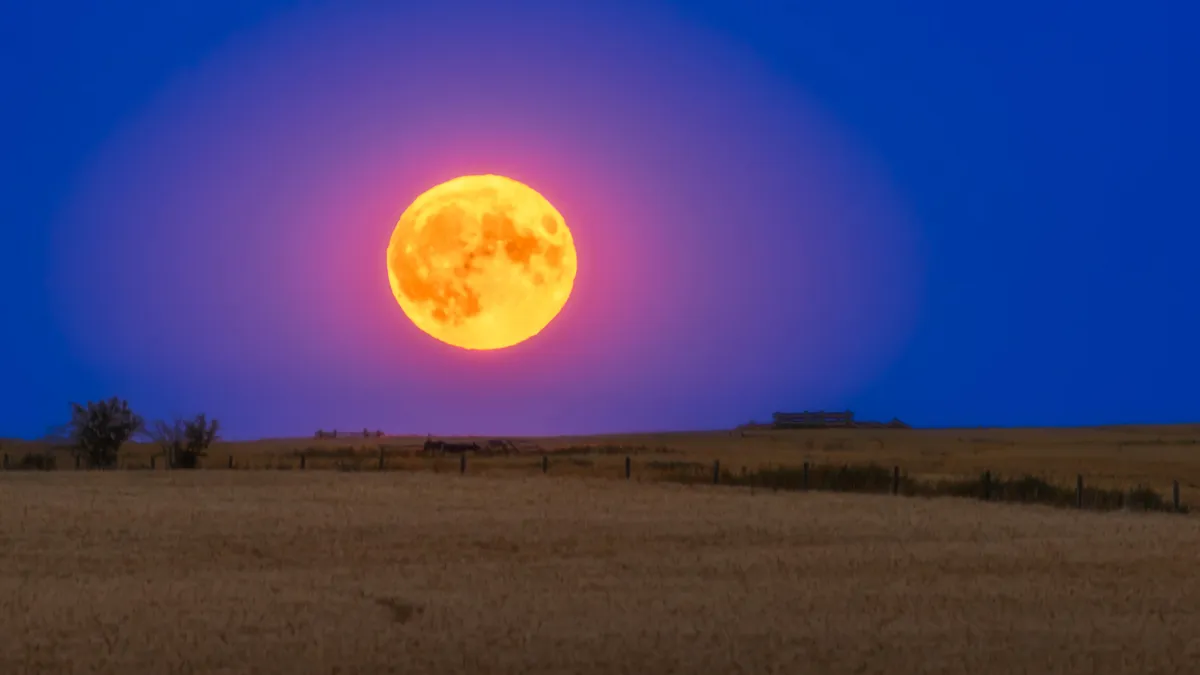
The first full moon of astronomical summer in the Northern Hemisphere, known as the Buck Moon, is set to shine brightly on Thursday, July 10. This remarkable lunar event will be one of the lowest-hanging full moons of the year, captivating skywatchers across North America.
Although the Buck Moon reaches its full phase at 4:38 p.m. EDT on July 10, it will still be below the horizon for viewers in North America at that time. To catch a glimpse of this stunning full moon, the best viewing opportunity will be during moonrise at dusk on Thursday evening. As the moon ascends the eastern horizon, it will appear as a striking orange orb, providing a breathtaking spectacle for those who take the time to look up.
For precise timing based on your location, consider using a moon calculator. This tool can help you determine the exact moment to expect the Buck Moon to rise in your area, ensuring you won’t miss this celestial event.
This month’s full moon will be positioned in Sagittarius, one of the most recognized summer constellations in the Northern Hemisphere. However, it's important to note that Sagittarius lacks bright stars, so you may not see any nearby the full moon during this event.
The Buck Moon is particularly notable for being one of the lowest full moons of the year, second only to the Strawberry Moon, which occurred on June 11. By definition, a full moon is directly opposite the sun in the sky, mirroring its position. Thus, when the sun is at its highest point, as it was during the summer solstice on June 20, the moon will be at its lowest point. This positioning causes the Buck Moon to rise in the southeastern sky at dusk, traverse the southern sky without climbing too high, and eventually set in the southwest at dawn.
One fascinating aspect of the Buck Moon is its proximity to the horizon throughout the night, which enhances its apparent size and color. This phenomenon, known as the moon illusion, tricks our brains into perceiving the moon as larger than it actually is. NASA explains this interesting effect, making it a great opportunity for photography enthusiasts and casual observers alike.
In addition to its stunning appearance, the Buck Moon will also be the farthest full moon from the sun this year. This is due to Earth's slightly elliptical orbit; on July 3, Earth reached aphelion, its farthest point from the sun. As a result, the next full moon will be positioned on the side of Earth that faces away from the sun, making it the farthest full moon of the year.
The name "Buck Moon" originates from the time of year when male deer begin to grow their new antlers in July. This name, along with others such as the Salmon Moon, Raspberry Moon, and Thunder Moon, reflects various cultural interpretations of this lunar phase. In English, this full moon is sometimes referred to as the Hay Moon, celebrating the midsummer harvest. Additionally, Celtic traditions have their own names for this moon, including Claiming Moon, Wyrt Moon, Herb Moon, and Mead Moon.
After the Buck Moon, skywatchers can look forward to the next full moon, the Sturgeon Moon, which will rise on Saturday, August 9. Mark your calendars and prepare for another enchanting lunar event!